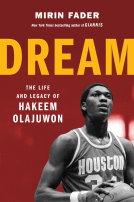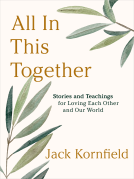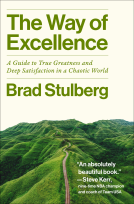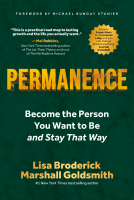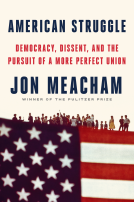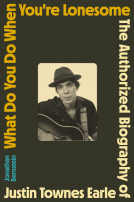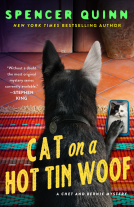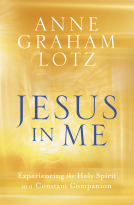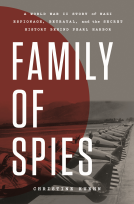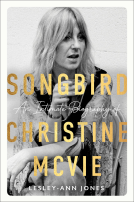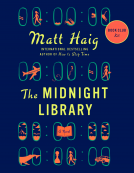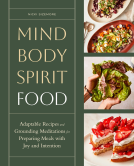
The World of Bob Dylan
by Sean Latham
This title was previously available on NetGalley and is now archived.
Send NetGalley books directly to your Kindle or Kindle app
1
To read on a Kindle or Kindle app, please add kindle@netgalley.com as an approved email address to receive files in your Amazon account. Click here for step-by-step instructions.
2
Also find your Kindle email address within your Amazon account, and enter it here.
Pub Date Apr 27 2021 | Archive Date May 06 2021
Talking about this book? Use #TheWorldofBobDylan #NetGalley. More hashtag tips!
Description
Bob Dylan has helped transform music, literature, pop culture, and even politics.
The World of Bob Dylan chronicles a lifetime of creative invention that has made a global impact.
Leading rock and pop critics and music scholars address themes and topics central to Dylan's life and work: the Blues, his religious faith, Civil Rights, Gender, Race, and American and World literature. Incorporating a rich array of new archival material from never before accessed archives, The World of Bob Dylan offers a comprehensive, uniquely informed and wholly fresh account of the songwriter, artist, filmmaker, and Nobel Laureate whose unique voice has permanently reshaped our cultural landscape.
Available Editions
| EDITION | Hardcover |
| ISBN | 9781108499514 |
| PRICE | $25.95 (USD) |
Average rating from 12 members
Featured Reviews
This book describes itself as the “first published project to emerge from the Institute for Bob Dylan Studies at the University of Tulsa”. This institute is linked to the Bob Dylan archive which assembles over 100,000 items including audio and video recordings, essays, poems, photographs, correspondence and more. The archive has Dylan’s support and he described it as “a great honour.” The purpose of the archive is both public display and academic research. Sean Latham, editor of this title, is director of the institute as well as a professor of English at the adjacent University.
Latham says the purpose of the book is to get different perspectives on “understanding the depth, complexity and legacy of Dylan’s music, while at the same time setting out an entirely new agenda for writing, research and invention.” That second goal sounds ambitious and I am not sure exactly what Latham means, except insofar as academic writing about pop music still seems something of a novelty. There is always that question: are we taking all this too seriously? Those of who have grown up with Dylan’s work are too close to it to know; we may in fact be at some kind of “peak Dylan” as the adolescents of the sixties and seventies are now the professors and writers – and yes, there are plenty of professors here, seventeen if I counted them right, along with a journalist or two, and Dylan fan and author Andrew Muir. The Dylan of Ballad of a Thin Man didn’t have much time for professors, but hey, the times they are a changin’.
There are 27 essays here, with five sections: biography, the musical genres Dylan drew on, Dylan’s work and its place in culture, political contexts, and finally Dylan’s legacy. The title, by no coincidence, is the same as that of a 4-day symposium that took place at the end of May 2019, and some of the material, such as the chapter by Griel Marcus, is drawn directly from that event.
We kick off with a rather selective chronology, then Andrew Muir takes us through the biographies: Scaduto, Shelton, Spitz, Heylin (“it so far outclasses its predecessors that it might as well be the first”), Sounes, and mention of some others. Enjoyed this. Then we get Latham on Dylan’s songwriting, a challenging topic, and a piece that to me does not quite capture its subject. Then comes a chapter on Dylan’s singles, or ten of them: I couldn’t make sense of this one, why include Tangled up in Blue, which is hardly single material even though it was a (rather unsuccessful) one, but not Lay Lady Lay or Knockin’ on Heaven’s Door which work well as singles? And that is it for Part 1.
Part 2 on genres opens with an essay on folk music by Ronald D Cohen, then Griel Marcus on the Blues, based on his lecture. The Marcus piece is a bit odd in print, not least because it says “Bob Dylan’s Lovesick Bournemouth October 1 1997 plays.” There is always YouTube.
The third section is the best. Here we get Raphael Falco on Dylan’s visual arts; interesting because Falco is a professor of English writing a book on Dylan and Imitation: Originality on trial, and he picks up on the fact that many of Dylan’s paintings are based not on what he saw on his travels, as he claims, but on photographs or pictures by other people. “Dylan’s paintings of photographs that are themselves paintings provoke new (and largely overlooked) questions about imitation as an aesthetic practice,” writes Falco. This is followed by a chapter specifically about borrowing, by Professor of English Kevin Dettmar, author of the Cambridge Companion to Bob Dylan. Dettmar is perhaps needlessly verbose, but I did enjoy it when he wrote “Although the release of Love and Theft perhaps represents the apex of Dylan’s intertextual creative process, it also coincided with the burgeoning corpus of searchable online digital texts and the growing sophistication of the Google search engine, under whose scrutiny the songwriter’s entire catalog has been revealed to be full of patches and duct tape.”
There are two chapters on Dylan and religion, one on Judaism by Elliot R Wolfson, and one Christianity by Andrew McCarron, author of a book on Dylan’s “religious identities.” I enjoyed them both; and liked that McCarron by no means focuses only on Dylan’s most overtly evangelistic phase but writes about “a man whose connection to God has changed as he has aged,” calling his chapter “An Exegesis of Modern Times”, a 2006 album. McCarron also, correctly I believe, observes how Dylan combines sexuality with spirituality and infuses women with holy powers; though it seems this did not always ensure good behaviour towards women which might have been an intriguing thread to follow.
The sections on politics and on legacy did not work so well for me; but I was interested in the final chapter, by Mark A Davidson who is Archives Director of the American Song Archives in Tulsa including the Bob Dylan Archive. Tulsa, he notes, has become the “center of the Bob Dylan universe,” quoting an article in Rolling Stone, and in one sense it is hard to disagree.
Oddly, this is also my biggest disappointment with The World of Bob Dylan, that there is relatively little here in terms of examination of the archive. There are occasional intriguing remarks like “in the case of a song like Jokerman, from his 1983 album Infidels, Dylan wrote and revised the song over the course of nineteen pages; “ I would love to know more about this, and will look forward to future books that explore some of these newly uncovered artistic treasures.
The World of Bob Dylan, like most collections of essays, is good in parts, and an effective taster for further work from some of the authors included.
This volume will be intriguing for any Dylan fans out there, especially those who have read the best-selling memoir of the controversial musician Chronicles: Volume One. If you have not read Dylan’s memoir, I would recommend you to do so. Because you will be missing a lot of precious information on ‘Dylanology’ that is discussed in this volume. As one of the authors here suggest, there are not much artists out there whose names could be added with the suffix ‘-logy’ as though it denotes the complexities of understanding a person. Many of the resources that the authors use here come from The Bob Dylan Archive which has been established in March 2016. Dylan’s memoir is full of plagiarism accusations with many uncredited quotations from journalists here and there, and the controversy did not stop with how journalists and scholars alike spotted passages chopped out of SparkNotes in writing his Nobel lecture. This volume discusses this question which is still plaguing us: “Who exactly is Bob Dylan?”
Dylan flirted with many genres in pursuing his artistic expressions. It’s hardly thinkable now when he was booed by his audience during his concert at Newport Folk Festival in 1965 as he staged an electric sound with black jeans, high-heeled boots and sunglasses. At that time, the folk purists seem to misunderstand his statement and what constituted Bob Dylan as a whole. He did not come out of anywhere with electric guitar and play Like A Rolling Stone as though he betrayed the folk scenes to turn into rock and roll. Several songs in Dylan’s 1962 debut album include electric guitar as one of the instruments played. But more than anything else, this volume is successful in my opinion in explaining Dylan’s flirts with musicians from the blues, gospel, country, as well as rock scenes and how they are related to his musical expressions and how the Great American Songbook influences him.
The question of authenticity is also discussed a lot in this volume, as Dylan seems to take many influences from previous works that his works could be counted as hardly original. One of the earliest allegations was the accusation by Newsweek magazine in November 1963 that Dylan stole Blowin' in the Wind from a high school student called Lorre Wyatt. The allegation turned out to be untrue. However, there are many sources which try to trace the origin of the song such as Alan Lomax who discusses in his The Folk Songs of North America that the song was originated in Canada and was sung by former slaves who fled after Britain abolished slavery in 1833, or Pete Seeger who identified the melody of the song as an adaptation of the old African American spiritual song No More Auction Block/We Shall Overcome. Whichever source is correct, it goes without saying that there are no artists without influences and the only thing that would differentiate the academic quality of quotations would be the credited references. This volume through various authors could manage to intrigue us in tracing Dylan’s many influences and in what way they could be traced to his works.
Another controversial part of Dylan would be the decision of the Swedish Academy to award the Nobel Prize in Literature in 2016 to him. An author in this volume notes that the Nobel went to Dylan in the same year as the year the Man Booker Prize was awarded for the first time to an American with Paul Beatty’s The Sellout. One year previously, the Nobel Prize in Literature was awarded to an oral historian and documentarist Svetlana Alexievich who writes about the many sufferings that exist as the result of the disintegration of the Soviet Union. The turn of tides have come, and there are many ways to interpret the Swedish Academy’s decision as partial recognition of the broader way literature has become, for which Dylan has been awarded accordingly: "for having created new poetic expressions within the great American song tradition." Many of the research in this volume is recent and they discuss the intertextuality of Dylan’s works which in turn influence a singer-songwriter such as him to finally become a Nobel laureate.
The essays in this volume are academic, and clearly not intended for popular reading. You’ll have to be really interested with Bob Dylan and at least have read a bit about his life (Chronicles would be a book to go to). Most of the essays require slow reading and careful interpretation. Sometimes I would also play Dylan’s albums or songs in between the essays to be able to grasp the discussed ideas better. This is also clearly not a biography of Bob Dylan, as it skips many of his life stories and the timeline jumps frequently. But it’s a really insightful approach to understand the complexities of the many until we can finally answer briefly the question: “Who is Bob Dylan?” Sadly, “The answer is blowin’ in the wind.”
Nobel Laureate Bob Dylan’s creative impact is explored in wonderfully authored commentaries by leading music critics and scholars. Themed chapters open the pages on a life that has shaped influenced and shaped generations.
Dylan’s poetry paints pictures. His voice delivers his message and his inventiveness opens many doors to see ourselves and to understand the complexities of the human spirit.
Each chapter in this book is thought provoking. I went back to listen to several songs and found my perspective and/or understanding changed as if I was seeing it for the very first time. That in itself, explains Dylan’s global appeal. His impressions, experiences and truths reveal the possibilities.
This is Dylan as seen through many eyes. This is his world, creative, inspirational, controversial and uniquely his.
Thank you NetGalley, Cambridge University Press and Sean Latham for an ARC of this much recommended book in exchange for an honest book review.
This is an impressive collection which looks at Dylan in twenty-seven chapters by different writers, each focusing on his career through a different focus, some broad and some narrow. His music is looked at through the genres of folk, blues, gospel, country, rock, roots, and the Great American Songbook. Other topics include religion, literature including the Beats, gender, counterculture, civil rights, biographies, and many more. Most of the authors are college professors writing in non-academic style; others are music critics and independent writers.
Lots of information and thought-provoking ideas, so recommended to anyone interested in Dylan.
Thanks to Cambridge University Press and NetGalley for an advance copy to review.
This offers a fascinating look into an important figure in our cultural landscape who is often an enigma. I learned a lot about a man who has been an important part of the soundtrack of my life
Fantastic biography of Bob Dylan. It mentions most of his life but also the music. I could not put this down and finished in a few days. A true poet for music and a lyricist master. A must read for any Bob Dylan fan. Highly recommended.
Thanks to Netgalley, Sean Latham and Cambridge University Press for an ARC in exchange for an honest review.
Available: 4/27/21
Readers who liked this book also liked:
Lisa Broderick and Marshall Goldsmith
Business, Leadership, Finance, Nonfiction (Adult), Self-Help
